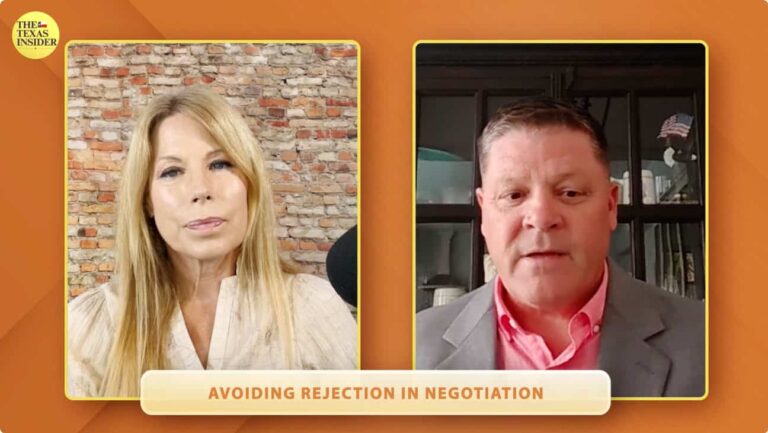By Dave DeSantis
Every negotiation begins with a pain. If the pain is yours, you would like it to go away. If the pain belongs to your respected opponent, they would like to have it relieved or solved. We’ll show you how we distinguish and identify negotiation pain and problems.
Without pain, there’s no reason for a negotiation. The greater the pain, the more value is placed on its solution.
In negotiation, it is not uncommon for people to hide the severity or importance of their pain from the other side. For example, a purchaser or a seller can conceal the significance of their pain from the other party. They do this to mask the importance of their real pain, and hence, the value they are willing to exchange for its solution. We see this all the time when we coach people who are selling or purchasing services and products.
Hiding the Pain
While hiding the significance of the real pain, the purchaser communicates to the seller that their real pain is the “price” or some other term or condition. This is a common negotiation tactic that sophisticated purchasing organizations use to deflect the magnitude of their pain. It also creates neediness in the sellers. The purchaser tries to commoditize and devalue the seller’s solution by directing the negotiation toward a feature that many other suppliers can offer.
The purchaser is attempting to tilt the playing field to their advantage. They create the vision of neediness in the seller’s head that other suppliers can meet their needs just as well. Once this deception is in the mind of the seller, they often begin to negotiate against themselves by making unnecessary compromises.
Blind to the Pain
Sometimes your respected opponent does not see the severity of their pain and how it could affect them in the future if it is not solved. In this case, if you see the pain, it is up to you to help the other side see the intensity of the pain they are facing.
Let’ go back to the purchasing organization that was trying to make the entire conversation about price. They may not realize that without access to your product or services, and your knowledge of how to apply your products to their real pain, the purchaser’s company may risk meeting a contractual obligation to serve their largest customer.
Your Job as a Negotiator
Your job as a negotiator is first to recognize and understand the presence and severity of all the pain points that your respected opponent is looking to solve. Then, you prioritize these pain points to discover the “real” or primary pain of each person connected to your negotiation who can accept or reject your solution – the decision-makers. Remember, your respected opponent invited you to negotiate for a reason. That reason is to solve their “real pain.”
This “real pain” discovery process is one that you should not skip, especially when your respected opponents may not want to disclose their real reason for negotiating with you.
Of course, discovering your opponent’s real pain does not guarantee that you will be chosen to provide your solution. Your opponent may have other alternatives, and the proposal that you give them should reflect how you stand, relative to these alternatives.
When the other side is hiding their pain – You should be prepared to exercise your right to veto their attempt to deflect your attention from the value of their real pain. There is no need to call out their deception overtly. Instead, politely tell the person who is hiding the pain that you need some time to consider how to best proceed. Then reach out to the decision-maker, who has the most to lose if they do not get access to your product or service, that others are holding up the deal.
The decision-makers can then let the people who are holding up the deal know they will be held accountable if the negotiation breaks down. Often, we find that the people who are holding up the deal have different objectives than the people who will use your products or services.
For example, the holdup may be due to focusing on the purchase price when the product’s actual user is considering the total value of the offering, including price, productivity savings, and ease of use.
In this case, the person holding up the deal due to price will relax their position when the user of the product permits them to pay a higher price.
With permission, the negotiation often continues, on your terms. You need to exercise your right to veto appropriately.
When the other side does not know they have a pain – Your job is to create vision so they can see and understand the repercussions of not solving their real pain.
It is important to remember that you are not “creating” pain but uncovering a preexisting pain that the other side does not see. We often coach our clients to help their respected opponents see the true value of our client’s offerings by asking a series of vision-building questions. These questions are designed to let our clients’ respected opponents voice what could happen if they do not solve their pain and what they will be able to do in the future once their pain is solved.
These future scenarios may or may not utilize our clients’ offerings, but they do paint a different and better possibility for the client’s respected opponents. Once they see this new possibility, the respected opponents can move forward to value our client’s offerings appropriately.
Moving from Negotiation Pain to Problems
After you discover the “real pain” that your respected opponents want to solve, you now must build the ladder between today’s status quo and tomorrow’s future state, where your offering solves your respected opponents’ pain.
Build the ladder rung by rung. Each rung in the ladder is an obstacle or problem that needs to be negotiated and agreed upon by all parties.
No ladder is functional or safe until all the rungs are installed. In a negotiation no pain is relieved until all the problems that each decision-maker sees are negotiated and resolved. If you skip a problem because it is hard to solve, you put the entire negotiation at risk.
No negotiation is complete until all the problems are identified and negotiated. If issues are not addressed, they will eventually resurface for the very reason that they were hard to resolve in the first place. When they reappear, they often begin to break the entire agreement, just like when one rung on a ladder breaks and the integrity of the whole ladder is compromised. Usually, the broken rung results in more stress on the remaining rungs, and they too begin to break. The entire ladder is useless.
Case Study
Once you identify the “real pain,” make a list of all the problems that you think may prevent the deal from moving forward. Prioritize the problems by highlighting the “deal breakers” and putting them on the top of your list.
For example, Camp Systems had a client who manufactured cooling technology for cell phone towers. The real pain of telecom companies that installed towers in extremely hot climates was that unless they could keep the electronic components in the towers below a specific temperature, the components would degrade and fail. This problem could cause a disruption of phone service to the telecom’s customers and create a costly maintenance problem.
The business opportunity for our client was significant, but they had not yet filed for patent protection for their cooling technology. Without protection for their technology, our client would not be able to capture the value they provided or recoup the millions of dollars of R&D investment.
In this case, the telecom’s pain was clear, and there was indeed a deal to be made. However, the problem was that our client was reluctant to negotiate before they had protected their intellectual property.
Without protection, the potential value of any deal would be much less because new competitors could enter the market without incurring significate R&D costs and undercut our client’s position. So, before our client agreed to begin negotiations with the telecom company, we advised them first to secure the patent rights to their technology. This cost our client additional time and money, but that was the cost of building the first solid rung of the ladder.
Summing Up Pain and Problems
Before you consider entering a negotiation, identify the real pain or the underlying reason why the party with a pain is looking for a solution. Then make a list of all the problems that need to be addressed and solved to create agreements between all parties that will stick.
This process may seem simple, but no one said it was easy. This is why we refer to negotiation as a “human performance event.” Just like learning to play a sport or musical instrument, it takes effort and time to master negotiation strategies.
Although it will take time and effort to identify the pain and problems for any business negotiation, you can make this process as effective and efficient as possible when you follow a proven negotiation system.







